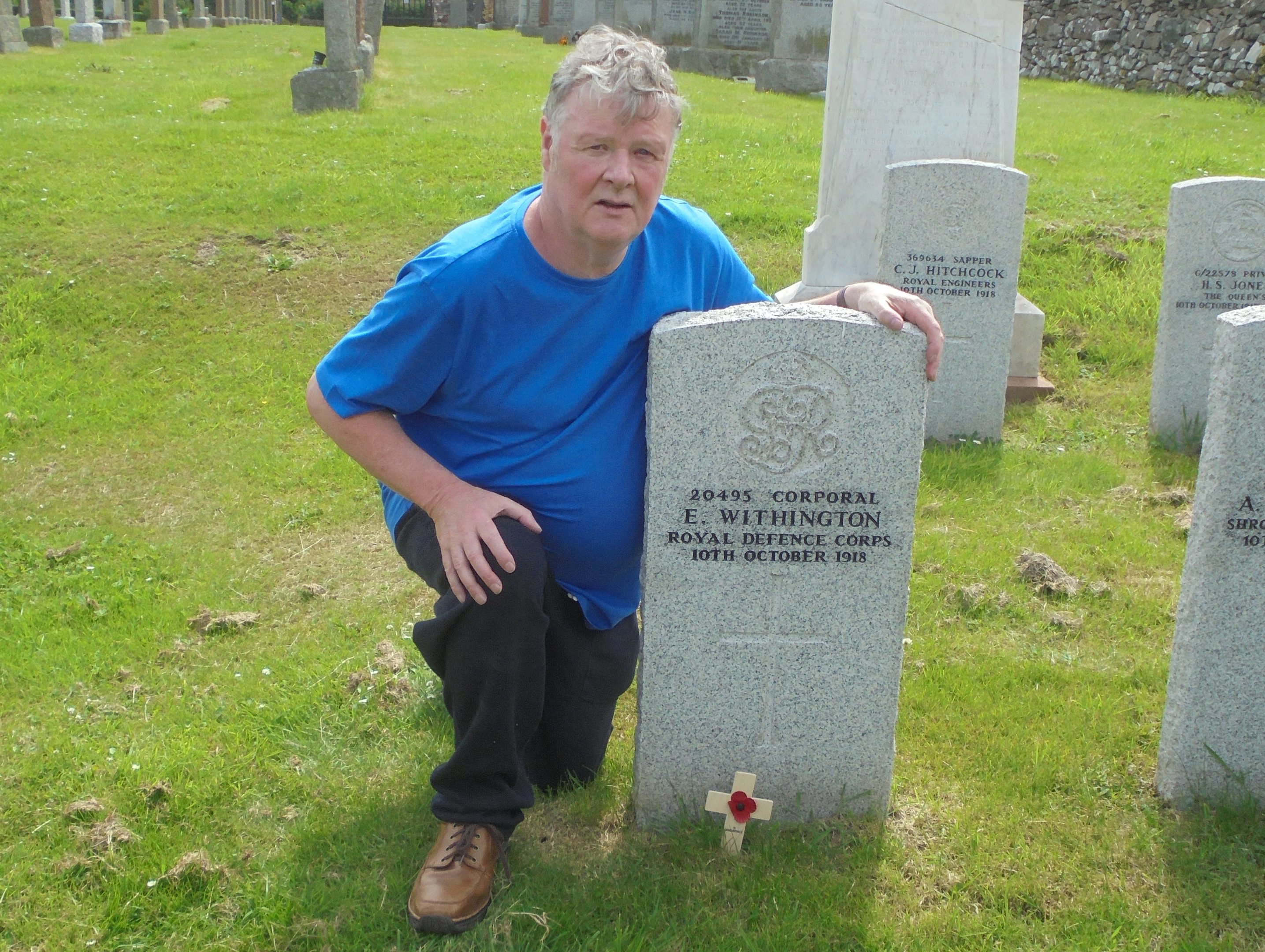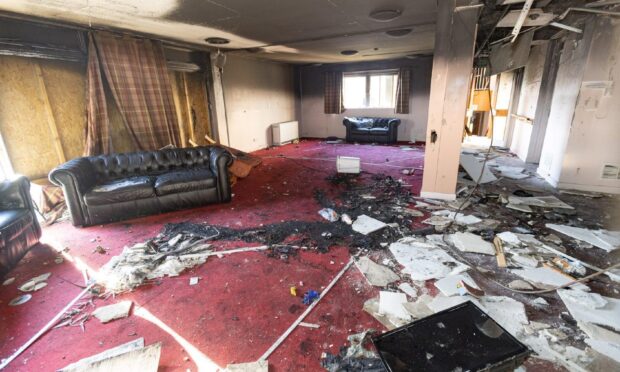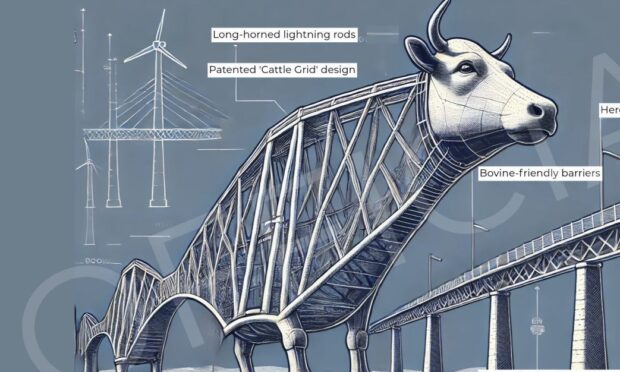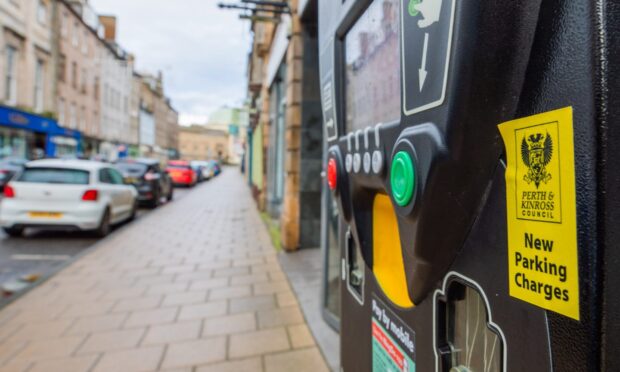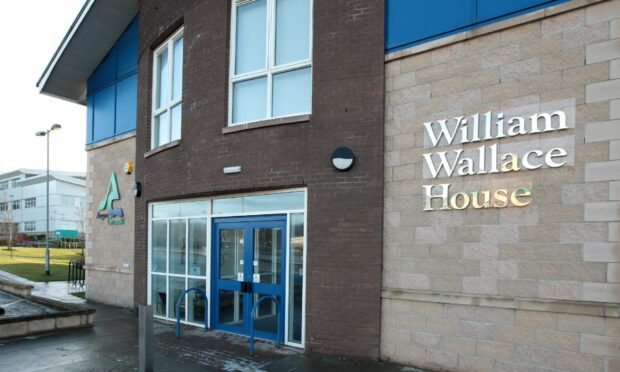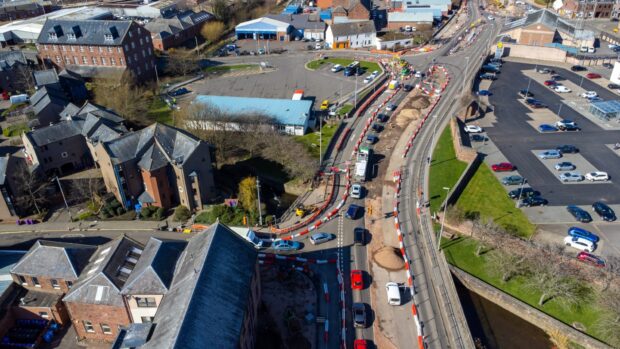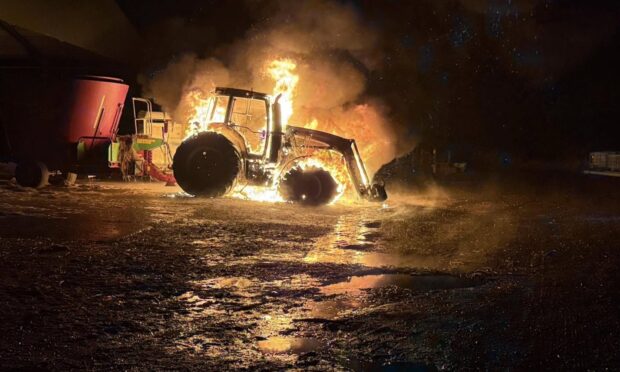An Angus man has made a pilgrimage to the Solway Coast to honour an Arbroath soldier who was killed in a U-Boat attack in 1918.
Patrick Anderson, a keen historian from Letham, laid a poppy cross at the grave of Corporal Charles Edward Withington at St Cuthbert’s Old Churchyard in Kirkcudbright.
Corporal Withington, 46, of the Royal Defence Corps, resided with his wife Mary Smith and three children at Dishland Street in Arbroath and joined up in June 1915.
He was stationed in Tralee and was on his way home from Ireland to Holyhead in Wales on leave when the Royal Mail ship Leinster was attacked by three torpedoes from UB-123 on October 10.
His body was washed ashore at Kirkcudbright alongside four other victims and his wife identified his remains before he was buried with full military honours.
The official death toll was 501, out of a total of 771 (77 crew and 694 passengers) which remains the greatest single loss of life in the Irish Sea.
The five war graves containing the bodies of the Leinster Disaster victims that washed up at Kirkcudbright were paid for by public subscription.
Mr Anderson said: “I was honoured to lay a poppy cross at the grave of former Arbroath resident Corporal Charles Edward Withington.
“He is buried with his colleages from other British Army regiments that were stationed in Ireland with him.
“They were all going on leave and hoping the war would be over by the time they returned to duty – sadly he and his colleagues never saw the end of the Great War.
“Maybe his widow wanted him to be buried with his army colleagues all together which is why he wasn’t moved to Arbroath for burial.”
Mr Anderson was interested in Corporal Withington after finding his name alongside that of his uncle on the St Mary’s Church Great War Memorial in Arbroath.
Corporal Withington and Lieutenant Patrick Wright Anderson both attended St Mary’s and their names are on both the church’s war memorial and the town’s war memorial.
Mr Anderson said: “Corporal Withington’s name is not on the Scottish National War Memorial roll of honour at Edinburgh Castle and I tried to get his name added to that roll.
“Sadly I wasn’t able to as he was born in Lancashire and all casualties must be Scottish by birth.”
In 2008, 90 years after its sinking, a commemorative stamp was issued by An Post, recalling particularly the Post Office’s 21 staff who died in the tragedy.
The sinking of the vessel is further recalled in the postal museum of the General Post Office in Dublin’s O’Connell Street.
The attack
The ship’s log states that she carried 77 crew and 694 passengers on her final voyage under the command of Captain William Birch.
The ship had previously been attacked in the Irish Sea but the torpedoes missed their target.
Those on board included more than one hundred British civilians, 22 postal sorters (working in the mail room) and almost 500 military personnel from the Royal Navy, British Army and Royal Air Force.
Also aboard were nurses from Britain, Ireland, Australia, New Zealand, Canada and the United States.
Just before 10am, passengers saw a torpedo approach from the port side and pass in front of the bow.
A second torpedo followed shortly afterwards, and it struck the ship forward on the port side in the vicinity of the mail room.
Captain Birch ordered the ship to make a U-turn in an attempt to return to Kingstown as the ship began to settle slowly by the bow; however, the ship sank rapidly after a third torpedo struck the Leinster, causing a huge explosion.
Despite the heavy seas, the crew managed to launch several lifeboats and some passengers clung to life-rafts.
The survivors were rescued by HMS Lively, HMS Mallard and HMS Seal.
The UB-123 was probably lost in a minefield in the North Sea on its way back to Germany, on or about 19 October 1918.
The bodies of her commander Oberleutnant zur See Robert Ramm and his crew of two officers and 33 men were never recovered.
